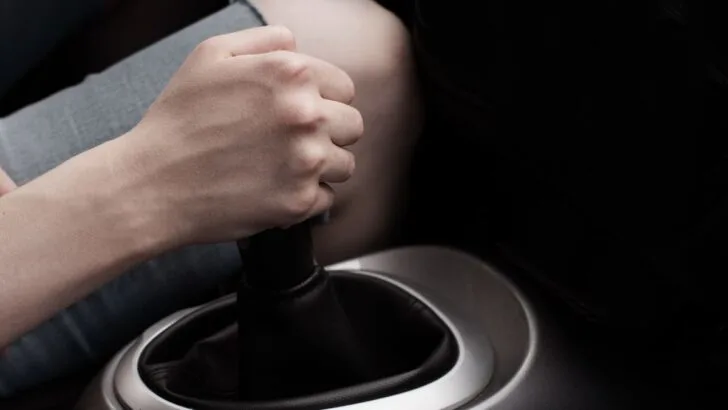Towing a vehicle can be a challenging task, especially when it comes to automatic 4x4s. With their complex drivetrain systems and advanced transmissions, many individuals are unsure whether towing such vehicles is even possible.
You can tow an automatic 4×4 vehicle, but the method of towing will depend on the specific vehicle’s design and the owner’s manual instructions. Towing incorrectly, such as not disengaging all-wheel drive systems or not using a flatbed when necessary, can potentially damage the transmission or drivetrain.
Keep reading to learn more about the methods and precautions to take when it comes to towing automatic 4×4 vehicles!
Table of Contents
Towing Automatic 4×4 Vehicles: Basics
Transmission and Transfer Case
Automatic 4×4 vehicles have complex drivetrain systems that include both an automatic transmission and a transfer case.
The transfer case distributes power between the front and rear axles.
When towing, it is important to engage the appropriate setting in the transfer case to ensure the wheels being towed are free to rotate.
Towing Equipment
Using the right towing equipment is important for a safe and secure tow.
Always be sure that the towing vehicle is equipped with a suitable tow hitch and that it is properly rated for the weight of the automatic 4×4 being towed.
You can also consider using safety chains, tow straps, or cables to provide an extra level of security during the towing process.
Speed and Distance
While towing an automatic 4×4 or any other vehicle, it is important to maintain a moderate and controlled speed to ensure stability and prevent undue stress on either of the vehicles.
High speeds can lead to loss of control and reduced braking ability.
Always try to plan regular breaks during long-distance towing to prevent overheating of the transmission and other components since airflow and lubrication will be limited on the non-running towed vehicle.
Four-Wheel Drive vs All-Wheel Drive
Four-Wheel Drive (4WD)
Engage and Disengage
Four-wheel drive vehicles typically have a transfer case that allows you to engage or disengage the 4WD system.
When towing, it is generally recommended to disengage the 4WD mode and switch to a two-wheel drive.
This reduces wear and tear on the drivetrain and prevents potential damage during extended towing.
Towing Methods
When towing a 4WD vehicle, it is typically recommended to use a flatbed trailer to ensure all wheels are off the ground.
This prevents potential damage to the drivetrain and allows for safe and secure transportation over both short and long distances.
All-Wheel Drive (AWD)
Continuous Power Distribution
All-wheel drive systems are designed to continuously distribute power to all four wheels based on different traction conditions of the road or ground.
This provides improved stability and handling on various road surfaces.
But AWD systems are not typically designed with towing as a primary consideration, so it’s up to you to either read the owner’s manual or consult a mechanic for information on the best towing practices to prevent damage to the drive systems.
Towing Methods
Some AWD vehicles may require all wheels to be off the ground using a flatbed trailer, while others may be able to be towed with two wheels on the ground using a tow dolly.
Certain AWD vehicles may also require specific procedures for disengaging the AWD system before towing. Otherwise, you run the risk of damaging these components.

Manual vs Automatic Transmission
Towing a Manual Transmission Vehicle
Gear Selection
When towing a manual transmission vehicle, it is almost always recommended to place the transmission in neutral to disengage the gears.
This prevents unnecessary wear on the transmission components and allows the wheels to rotate freely during towing.
Manual Release
Some manual transmission vehicles may have a manual release lever or similar procedure to disengage the clutch.
Consult the vehicle’s owner’s manual for specific instructions if you are unsure how to do this since failure to disengage the clutch properly may result in transmission damage during a tow.
Towing an Automatic Transmission Vehicle:
Gear Selection
Some automatic transmissions require the use of a neutral position, while others may have specific procedures to follow, such as placing the transmission in a “tow mode” or “drive” with the engine off.
Failure to follow the recommended procedure can result in transmission damage, so if you are unsure of which method to use for your particular vehicle, contact a mechanic or tow service, or check your owner’s manual.
Transmission Cooling
Towing with all four wheels on the ground places additional stress on the transmission, and automatic transmissions are particularly susceptible to overheating.
Consider installing an auxiliary transmission cooler to help maintain proper operating temperatures during towing, especially when towing heavy loads or traveling long distances, or plan for stops along the way to allow the vehicle to cool down.
Towing Capacity
Towing capacity refers to the maximum weight a vehicle can safely tow without exceeding its design limits.
It is an important specification to consider when selecting a vehicle for towing purposes.
Gross Vehicle Weight Rating (GVWR)
The towing capacity is closely related to the vehicle’s Gross Vehicle Weight Rating, which is the maximum total weight of the vehicle and its load as determined by the manufacturer.
It includes the weight of passengers, cargo, fuel, and accessories. Your towing capacity should never exceed the GVWR.
Trailer Weight
When considering towing capacity, it’s important to account for the weight of the trailer and its contents too.
This includes the weight of the trailer or tow dolly itself, the vehicle being towed, and any additional accessories or equipment such as chains, cables, or other accessories.
Ensure that the combined weight of the trailer and its total contents do not exceed the vehicle’s towing capacity.
Weight Distribution
Proper weight distribution is extremely important for safe towing but can often be overlooked.
It’s important to distribute the weight evenly across the trailer and ensure that the tongue weight falls within the recommended range specified by the manufacturer.
Improper weight distribution can lead to instability, poor braking performance, and an increased risk of accidents.
Towing Methods
Flat Towing
Flat towing provides a straightforward and efficient towing method as the towed vehicle’s wheels are free to rotate, and there’s no need for additional equipment like trailers or dollies.
However, it’s very important to ensure that the towed vehicle is compatible with flat towing so that you don’t damage the transmission system.
Tow Dolly
Tow dollies are particularly useful for front-wheel-drive vehicles that aren’t designed for flat towing.
The towed vehicle is secured to the dolly using straps or chains to prevent shifting during transportation.
Tow dollies typically have their own braking system, which helps with control and braking efficiency.
Flatbed Trailer
A flatbed trailer is a versatile and widely used towing method that involves loading the entire towed vehicle onto a trailer.
The towed vehicle is driven or winched onto the flatbed and is then secured with straps, chains, or wheel chocks.
Flatbed trailers provide stability and security during transportation since all four wheels of the towed vehicle are off the ground.
Precautions and Preparation
Use Proper Towing Equipment
This may include items such as tow hitches, safety chains, trailer brakes, tow bars, tow dollies, or flatbed trailers.
Ensure that all equipment is properly installed, maintained, and rated to handle the towing load.
Secure the Load
Use straps, chains, wheel chocks, or other appropriate securing mechanisms to keep the load stable.
Double-check all connections and tighten them as necessary during short stops or refueling breaks.
Balance the Load
Distribute the weight evenly on the trailer and ensure that the load is properly balanced.
An unbalanced load can affect the stability of the towing vehicle and the trailer, potentially leading to control issues such as swaying or fishtailing and other unsafe towing conditions.
If you found this article helpful, make sure to take a look at the other towing-related posts below!
